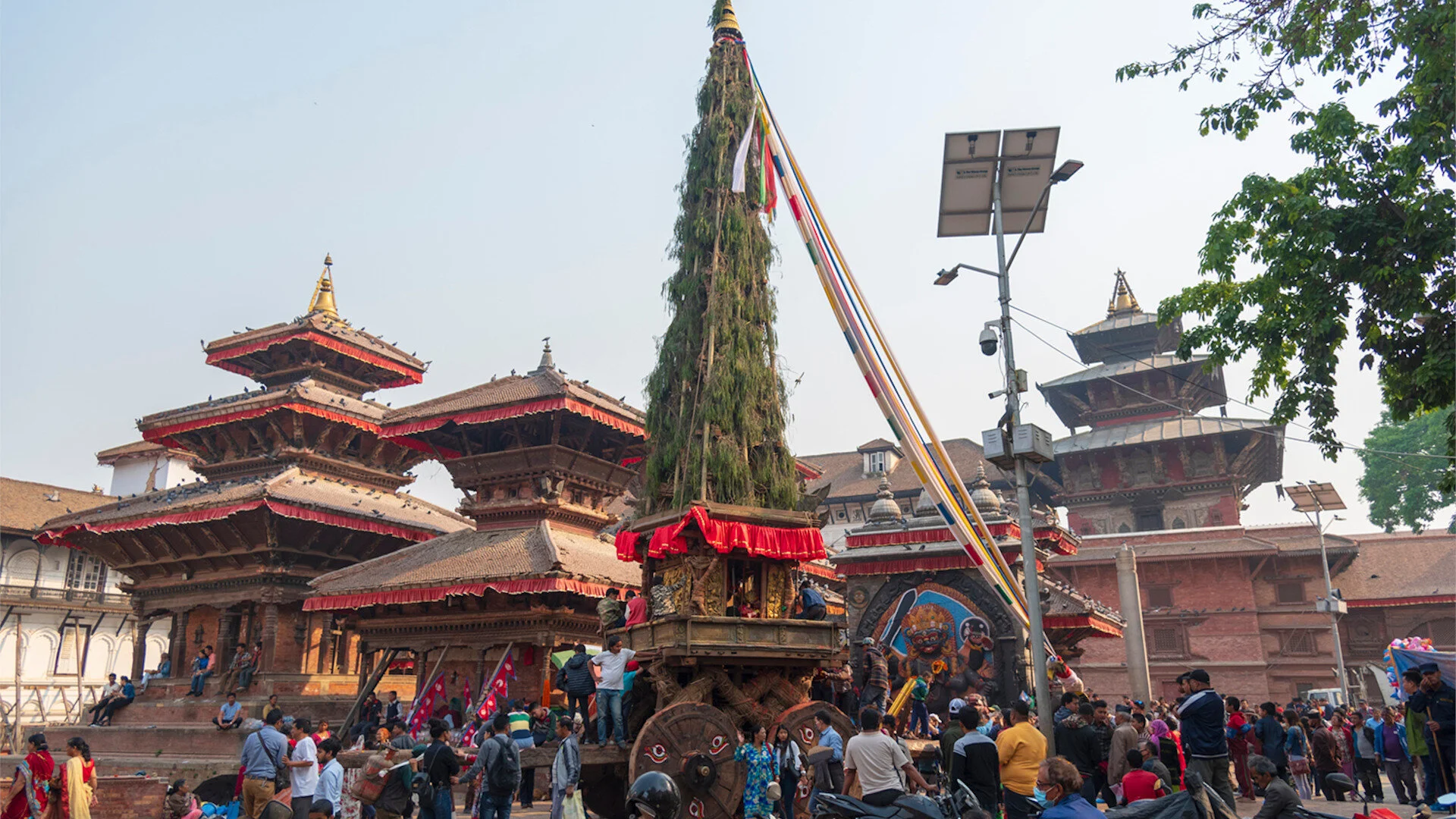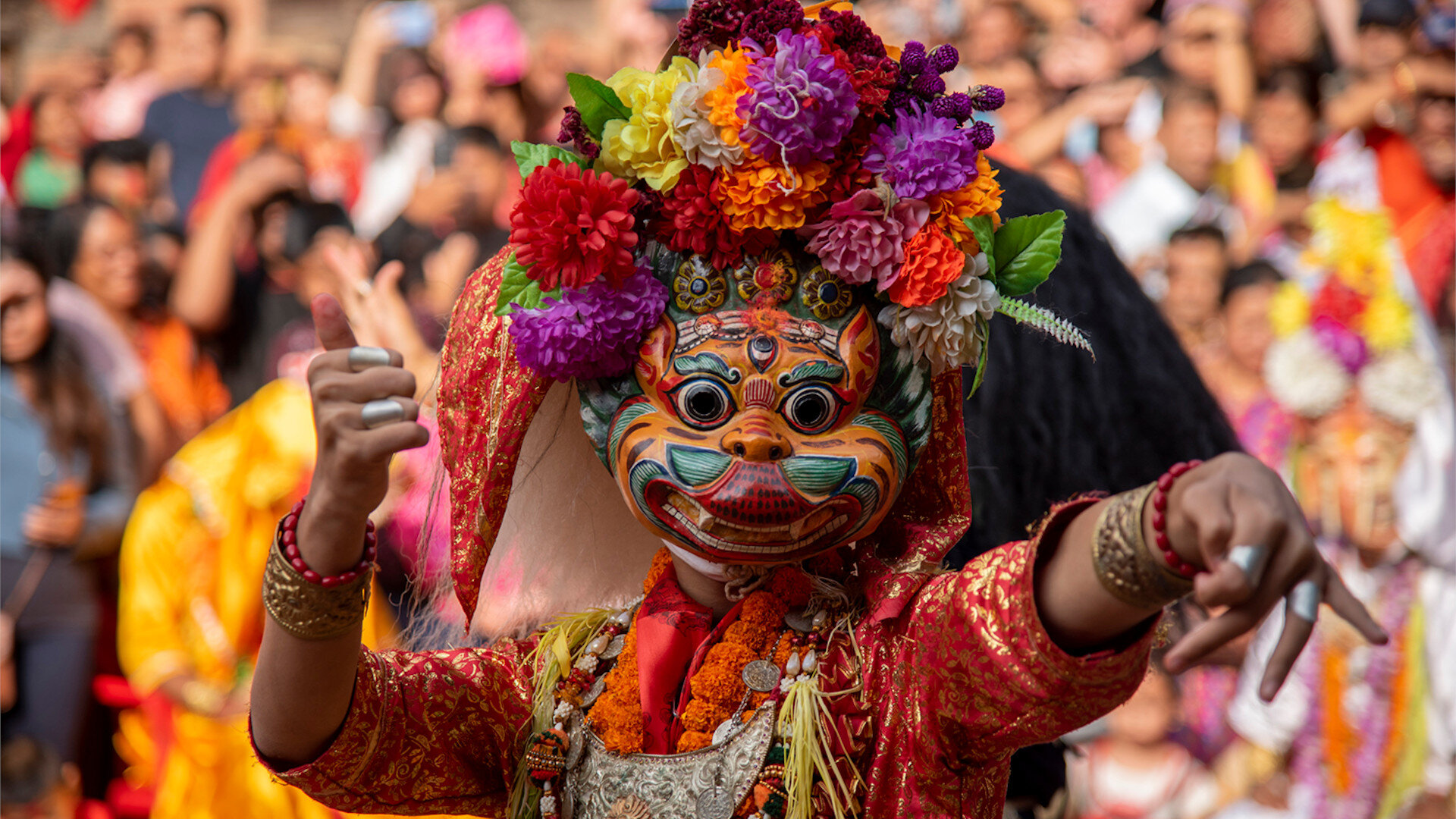Ghayh Chaku Sanhlhu
Celebrated In: January*
Commonly known as Maghe Sankranti, Newar households celebrate this day as Ghayh Chaku Samhlhu where Ghyah means Ghee (Clarified Butter) and Chaku which is molasses in Nepal Bhasa. This festival is observed according to the solar calendar of Bikram Sambat (B.S), rather than the traditional lunar calendar. This day begins with people taking a holy bath at the crack of dawn, which is followed by special worship.
Households prepare special delicacies such as yam, spinach, sesame candy and molasses which is consumed with the additions of ghee, ginger, and beaten rice. This day is also marked as the winter solstice, and consumption of the aforementioned foods helps warm their bodies.
Read more on the delights of Maghe Sankranti: Feasts of Maghe Sankranti
Swasthani Bakhan Kanegu
Celebrated In: January to February*
During the month of Magh, from Mila Punhi to Shi Punhi in the Nepal Era calendar, Swasthani Bakhan ( Tales of Swasthani) is recited every evening during this month. Devotees visit the Swastani temple in Sankhu and take a holy dip in the Sali Nadi, along with various other rivers. It is generally believed that worshipping Swasthani brings forth happiness, and well being in life.
Read more on Swasthani: Swasthani Bratakatha Festival In Nepal
Shree Panchami
Celebrated In: February*
Shree Panchami also is known as Basanta Panchami is regarded as the day when winter ends and spring begins. The day is centred around the worship of Goddess Saraswati, who is regarded as the Goddess of Knowledge. During this day children are taken to the nearest Saraswati temple to take blessings. A tradition during this day is to write something, on the walls in the vicinity of the temple. Buddhist households worship Lord Manjushree on this day.
Sila Charhre
Celebrated In: March*
In the lunar calendar of Nepal Era, there are a total of 24 nights dedicated to Shiva, which is commonly known as Shivaratri. Amongst all the days of dedication, Sila Chahre is celebrated as the main night. This day is also referred to as Maha Shivaratri. This day honours Lord Shiva who is known as “The Destroyer” within the Trimurti.
This festival is marked to “Overcoming darkness and ignorance”, for which Lord Shiva is remembered. Devotees on this day fast, pray and meditate and visit various Shiva temples in their vicinity. Believers from all over the world, make a special pilgrimage to the temple of Pashupatinath in Kathmandu to offer their prayers and worship.
To learn more about the temple of Pashupatinath: UNESCO World Heritage: Pashupatinath
To Learn more about the legend: The Legend of Pashupatinath
Holi Punhi
Celebrated In: April*
Also known as “The Festival of Colour”, Holi is celebrated as the coming of spring. The beginning of the festival is marked by raising a ceremonial pole known as Chir in Basantapur of Kathmandu. The Chir features, clothes of various bright colours to symbolize the coming of the month of spring. People celebrate this occasion by offering colours to each other and having a feast.
Learn More About Holi: The Coming of Spring- Falgun Purnima
Pahan Chahre
Celebrated In: April*
Pahan Chahre is a festival that is specifically observed in the Kathmandu valley. It is also known as Pasa Charhe, where Pasa means friends. Celebrated for a total of 3 days, the first day sees the worship of the deity Luku Mahadyah (Lord Shiva). The second day is Dyah Lwakegu which is celebrated at the open field of Tudikhel in the evening. This day also coincides with the annual Ghode Jatra. On the final day, a grand celebration occurs at Asan of Kathmandu. The palanquins of Lumadhi Ajima (Maheshwari) also known as Bhadrakalai, Kanga Ajima (Varahi) and Tebhana Ajima (Chamunda) are paraded in the streets.
Newar households of Kathmandu invite their neighbours, extended families and friends for a grand feast to commemorate this day.
Learn more about Pahan Charhe: Pahan Charhe- Festival in Nepal
*: As Newar festivals are celebrated according to the lunar Nepal Era calendar, the dates in the Gregorian calendar are interchangeable.














